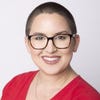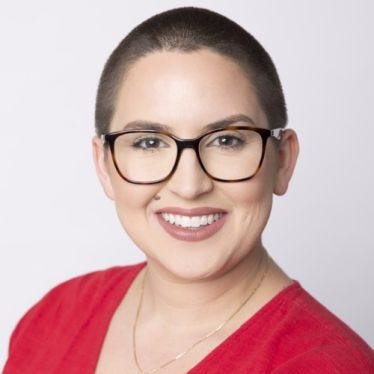A study, a research letter and a commentary published by JAMA Internal Medicine reviewed the issue of polypharmacy—use of over-the-counter (OTC) medications, dietary supplements and prescriptions—and disclosure of complementary and alternative medicine (CAM), and identified communication and nondisclosure among potential issues.
March 23, 2016

A study, a research letter and a commentary published Monday by JAMA Internal Medicine reviewed the issue of polypharmacy—use of over-the-counter (OTC) medications, dietary supplements and prescriptions—and disclosure of complementary and alternative medicine (CAM), and identified communication and nondisclosure among potential issues.
The study, “Changes in Prescription and Over-the-Counter Medication and Dietary Supplement Use Among Older Adults in the United States, 2005 vs 2011," compared use of prescriptions, OTC medications and dietary supplements in 2005-2006 among older adults—including concurrent use—with use in 2010-2011.
The study group included 2,351 participants in 2005-2006 and 2,206 in 2010-2011 who were between the ages of 62 and 85 years. In-home interviews and direct medication inspection were performed. Among the findings:
Use of dietary supplements increased from 51.8 percent in 2005-2006 to 63.7 percent in 2010-2011; multivitamin or mineral supplements and calcium were the most commonly used supplements during the study period. There was also a significant increase in use of omega-3 fish oils (4.7 percent to 18.6 percent).
Concurrent use of five or more medications or supplements of any type increased from 53.4 percent to 67.1 percent.
Use of at least one prescription medication increased from 84.1 percent to 87.7 percent.
Use of over-the-counter medications declined from 44.4 percent to 37.9 percent.
Risk for a potential major drug-drug interaction rose to 15.1 percent compared to 8.4 percent in 2005-2006.
Though the use of prescription medications and dietary supplements, and concurrent use of interacting medications, has increased since 2005, the threat of interactions between supplements and drugs remains low.
In a response to the study, Andrea Wong, Ph.D., vice president of scientific and regulatory affairs at the Council for Responsible Nutrition (CRN), said, “The results show that the prevalence of older adults taking a combination of drugs and supplements with a potential for interaction is low, suggesting that the actual risk to consumers is low."
In the commentary response to the study, “Polypharmacy—Time to get Beyond the Numbers," author Michael A. Steinman, M.D., calls for systems “to support an ongoing process of monitoring medications."
He wrote, “Such systems would help us periodically assess the benefits, harms, and ongoing need for each of a patient’s medications, as well as reasonableness of the medication regimen as a whole. These systems could also help physicians with deprescribing, for example by supporting gradual down-titration of a medication and monitoring patients for adverse drug withdrawal reactions after a drug is stopped."
In response to the commentary, Wong said, “We urge consumers to speak with their doctors and other healthcare practitioners about everything they consume, including dietary supplements. Dietary supplement use is highest among older populations, according to our research, and so we support the need for techniques to enhance the transparency of what elderly patients are taking, as Dr. Steinman suggests in his commentary."
Dan Fabricant, Ph.D., executive director and CEO of the Natural Products Association (NPA), also encouraged communication between patients and physicians. “NPA urges patients to discuss their comprehensive medication list with their doctor or pharmacist," he said in a response to the study. “There are also many educational resources available to medical professionals, including training sessions hosted by pharmacies and pharmacy schools."
The research letter, “Nondisclosure of Complementary and Alternative Medicine Use to Primary Care Physicians," reviewed disclosure of use of CAM by patients to their primary care physicians, and found 42 percent of patients who reported using CAM at least once in the year prior, and who had a primary care physician, did not disclose their most used CAM modality.
The research, which was based on findings from the 2012 National Health Interview Survey (NHIS), explored CAM modalities including: herbs and/or supplements; chiropractic and/or osteopathic manipulation; massage; yoga, tai chi or qi gong; mantra meditation or mindfulness; special diets; acupuncture; and homeopathy.
Adults who used herbs/supplements and who had acupuncture disclosed the most (75.1 percent and 64.5 percent, respectively). Nondisclosure was most common among adults who did yoga, tai chi or qi gong (35.3 percent) and among those who practiced meditation or mindfulness (36 percent).
According to the results, when adults did not disclose CAM to their physicians, it was most often due to physicians not asking about it or patients believing their physicians didn’t need to know about their CAM use.
“There appears to be a minority of consumers who do not inform their doctors of their supplement use and, at the same time, there are doctors who are not initiating conversations about supplements or other elements of CAM," Wong said. “CAM is becoming increasingly popular among Americans, who consider what used to be ‘alternative’ now to be a regular part of their integrated health regimen—one that goes beyond an over-reliance on pharmaceuticals. We hope doctors accept this is the new norm and take responsibility to open a dialogue."
About the Author(s)
You May Also Like






.png?width=800&auto=webp&quality=80&disable=upscale)